Guru Network: Redefining the Future of Web3 and AI Infrastructure
From White Paper to Reality: Building an Infrastructure for Tomorrow, Solving the Real Problem: Tying Service to Business Value, Revolutionizing Automation with BPMN and Decentralization
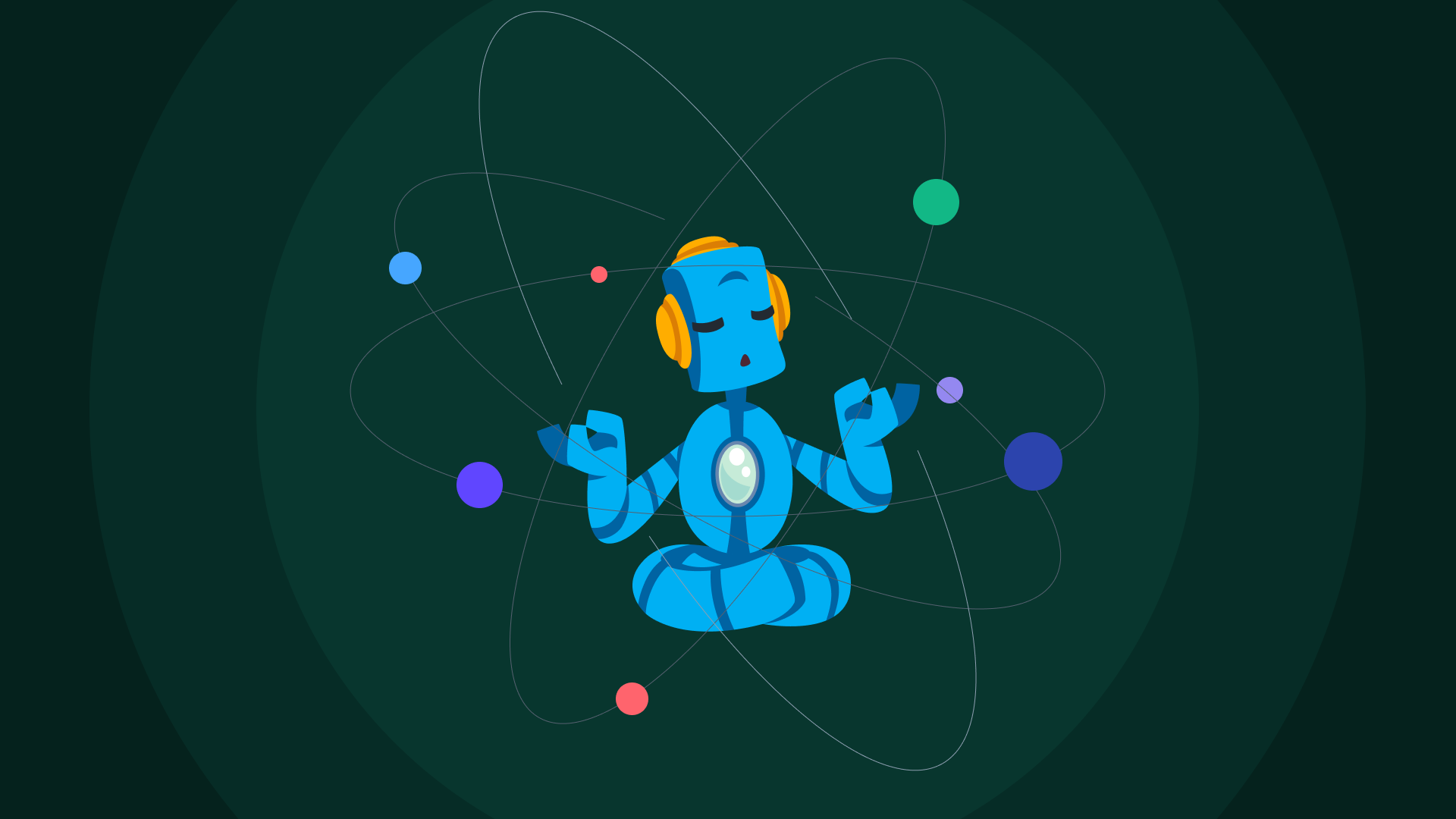
Evgeny Vakhteev, CEO of Guru Network:
When we set out to build the Guru Network, our vision was clear—to create an infrastructure that not only powers Web3 and AI innovations but does so in a way that directly delivers measurable business value.
Back in May, I discussed our roadmap during the liquidity bootstrapping pool (LBP) event, detailing how we would bring AI orchestration and decentralized automation to the forefront of Web3. I’m pleased to say we’ve stayed true to that roadmap.
We are exactly where we said we would be: launching AI processors, expanding automation, and moving forward with the very framework that’s at the heart of Guru Network.
From White Paper to Reality: Building an Infrastructure for Tomorrow
Our white paper outlines the bigger vision. We didn’t just want to create another infrastructure-as-a-service (IaaS) platform like AWS or Google Cloud. Instead, Guru Network aims to provide a layer-zero solution—an Infrastructure as Value service.
Traditional IaaS platforms, while powerful, often fail to connect the services they provide to the actual business value they generate. You pay for databases, compute, and storage, but none of these are inherently linked to the business outcomes you seek. That’s where we saw the opportunity for innovation.
With Guru Network, AI models, orchestration nodes, and data providers all integrate seamlessly into a decentralized system, where value is directly tied to business needs. This happens through our Guru token, which powers the entire network. When an application runs on Guru, the tokens flow between smart contracts, ensuring that services are directly tied to their usage and value.
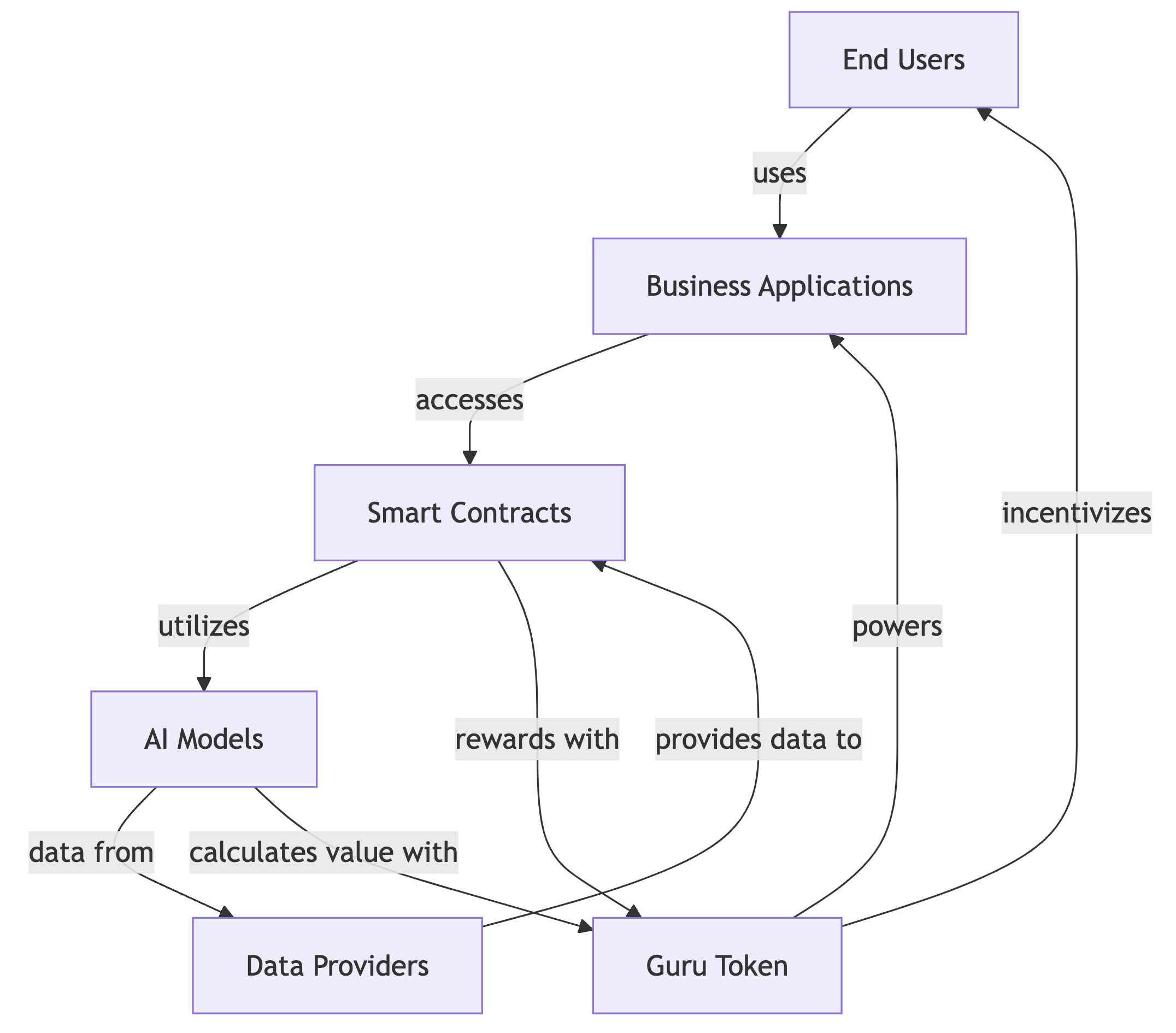
Empowering Decentralized Business Operations
At the core of this infrastructure is the Guru Framework, which allows developers to build, run, and scale applications on top of the Guru Network. Our own suite of applications—such as DexGuru, Burning Meme, and our various mini apps—are the first to utilize this new paradigm, demonstrating how a decentralized infrastructure can support real business needs.
The uniqueness of Guru Network lies in its approach to automation and decentralization. Instead of cobbling together services like databases or cloud functions, you gain access to entire AI-driven processes from our catalog. These processes are developed, run, and executed by decentralized nodes, ensuring both scalability and resilience.
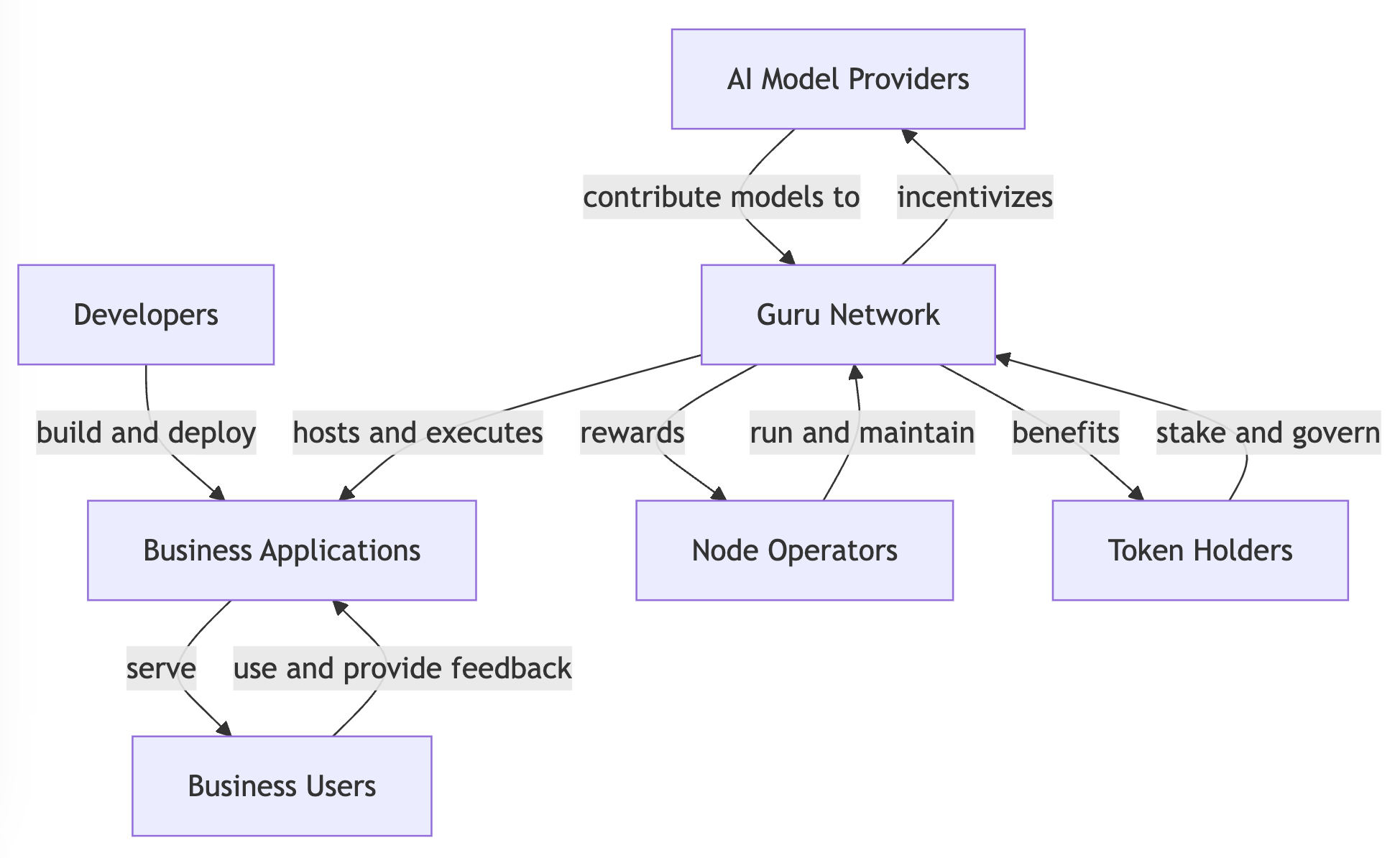
Solving the Real Problem: Tying Service to Business Value
The true problem with traditional cloud services is that they charge for infrastructure, not for the value they deliver to your business. With Guru Network, we’re flipping that model. Through Web3 automation and AI processors, we’re bringing business value directly into the infrastructure itself.
Now, instead of paying for "Lego blocks" of services, you pay for fully developed processes and services that are directly aligned with your business goals. This not only reduces operational complexity but also ensures you are getting value in the most decentralized way possible.
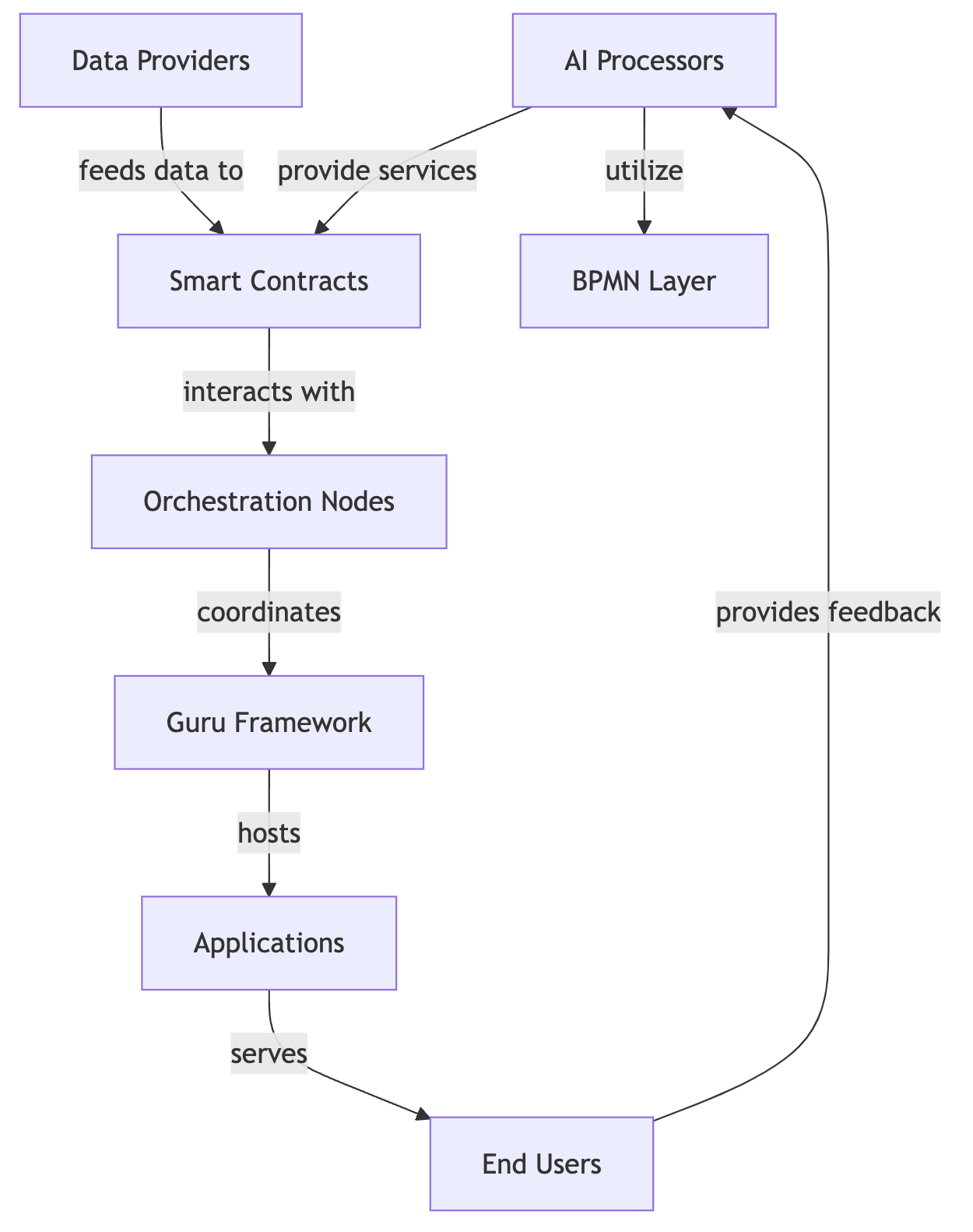
A Future Built on Value-of-the-Service
As we continue to develop and refine the Guru Network, we remain focused on our mission: to build a decentralized infrastructure where value, not just infrastructure, is the key offering. With products like DexGuru, Burning Meme, block explorers, data warehouses, and more, we are showcasing what it means to deliver value-as-a-service.
And this is just the beginning. As we grow, so too will the demand and adoption of these tools, driving the next wave of innovation in both Web3 and AI. Our white paper has laid out this vision, and we are executing it, step by step.
The future of Guru Network is bright, and it’s built on the foundation of delivering real business value in the most decentralized, innovative way possible.
A Business Process Automation-Centric Network
At the heart of Guru Network is our commitment to automating business processes, which is why we’ve adopted BPMN (Business Process Model and Notation) as a core standard. BPMN is widely used in traditional business environments for modeling and executing complex workflows, and we've brought this powerful standard into the decentralized world of Web3 and AI.
By leveraging BPMN, we’re not just building another blockchain network; we’re creating a platform where traditional business process automation meets the decentralized future. Guru Network allows businesses to model their operations as BPMN diagrams, turning manual, error-prone workflows into automated, optimized processes that run seamlessly on our decentralized infrastructure.
Our AI processors, orchestration nodes, and smart contract systems are designed to execute these BPMN workflows, transforming how businesses operate. With BPMN as a core layer, businesses can automate a wide range of tasks—from data processing to decision-making—on a decentralized network, using the Guru token to power and incentivize these processes.
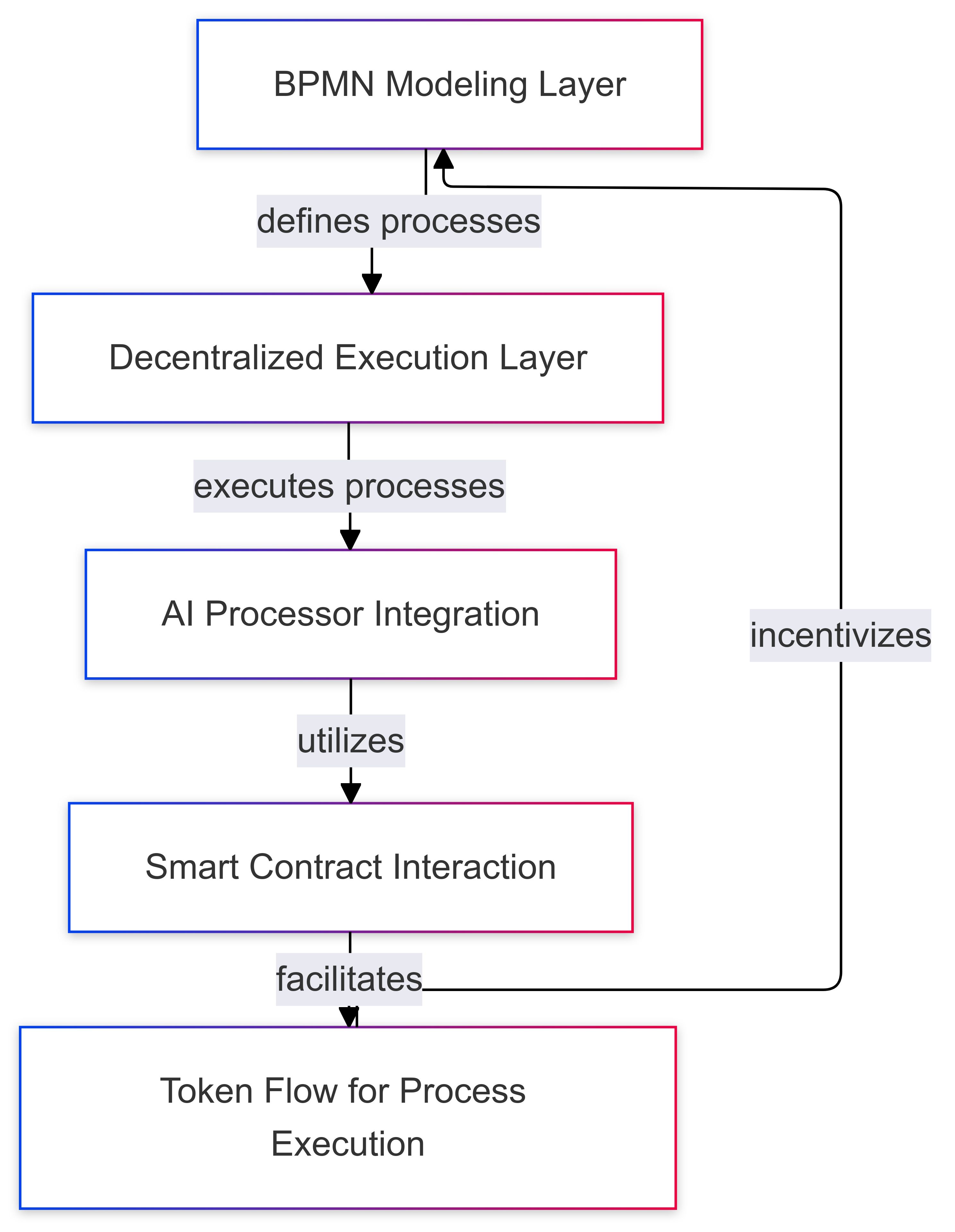
Revolutionizing Automation with BPMN and Decentralization
Traditional business process automation tools have always relied on centralized infrastructure, which limits flexibility and introduces bottlenecks. Guru Network takes this a step further by combining BPMN’s process automation capabilities with the decentralization and transparency of Web3. This makes Guru Network not just a blockchain platform but a Business Process Automation (BPA) network at its core.
Businesses can now design their workflows in a format they already know and trust, while benefiting from the scalability, resilience, and cost-efficiency of decentralized infrastructure. Every process can be distributed across multiple nodes, ensuring high availability and execution redundancy. More importantly, the Guru token facilitates the execution and validation of these processes in a seamless, efficient, and trustless manner.
By adopting a BPMN-first approach, we are opening the door for businesses to transition into decentralized operations without abandoning the processes that have worked for them in the past. We’re effectively bridging the gap between traditional business automation and the next-generation decentralized economy.
